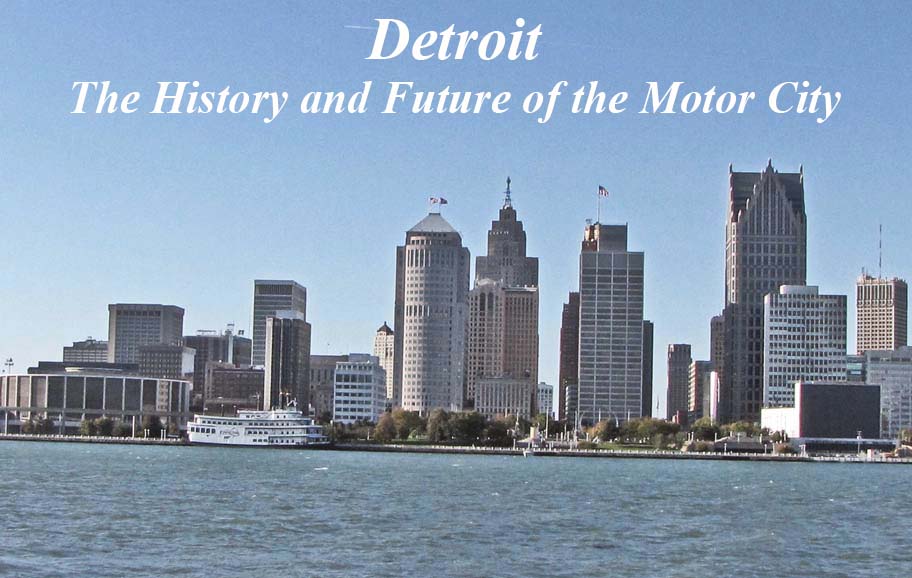
No city played a larger role in shaping the Twentieth Century
than Detroit. The most popular mode of local transportation was perfected
in the Motor
City, revolutionizing where people lived, how they got to work, when they
shopped and how they took vacations. Vehicles designed and built in Detroit
drastically improved living standards and fundamentally altered how we
live. The modern blue-collar middle class is largely a Detroit creation.
It emerged after decades of struggles between capitalists and their workers.
Thanks to Detroit’s powerful unions, fortunate workers expect paid
medical care, vacations, unemployment compensation, retirement payments
and wage increases indexed to inflation.
The United States defeated the
German and Japanese dictators in World War II because Detroit truly became
the “Arsenal of Democracy.” The tremendous wealth that entrepreneurs
amassed in Detroit in the late 19th and early 20th centuries led to a
building boom that gave Detroit an array of magnificent structures illustrating
the ken of architects who reshaped urban America between the 1890s and
the Depression. Perhaps only New York and Chicago have more buildings representing
the best of early Twentieth Century architecture. Detroit is a city of
immigrants as can be seen by the beautiful churches and synagogues each
group built shortly after arrival. It is also a city of attractive leafy
neighborhoods, numerous parks, and the nation’s most appealing international
boundary.
Despite its glorious history of prosperity, technological innovations, striking buildings, and cultural creativity in the arts and music, following the 1967 racial violence, Detroit became the most negatively stereotyped city in the country. These hostile views mask a vibrant and increasingly racially integrated city that is confronting the Herculean challenge facing Rust Belt metropolises: what happens when manufacturing jobs disappear? It is not that blue-collar industries have ceased to exist. They have not. Detroit remains axis mundi for automotive technology and many vehicles are assembled in and near Detroit. Three modern steel mills operate here. But they now employ few blue-collar workers.
This website offers an interpretation of the history of metropolitan Detroit linked to informed speculations about its future. It provides information about achievements that occurred here as well as about conflicts that made Detroit a metropolis polarized by race and economic class.
AUTHOR'S NOTE: I have enjoyed assembling this website. If you have suggestions for additions, please let me know. If you note errors in my descriptions, please send an e-mail.
FEEL FREE TO CONTRIBUTE A WEBPAGE FOR THIS SITE!!
 Interested people have visited this website since January 26, 2014
Interested people have visited this website since January 26, 2014
Websites Counter
Contact us!
Renf@umich.edu or Judym@umich.edu